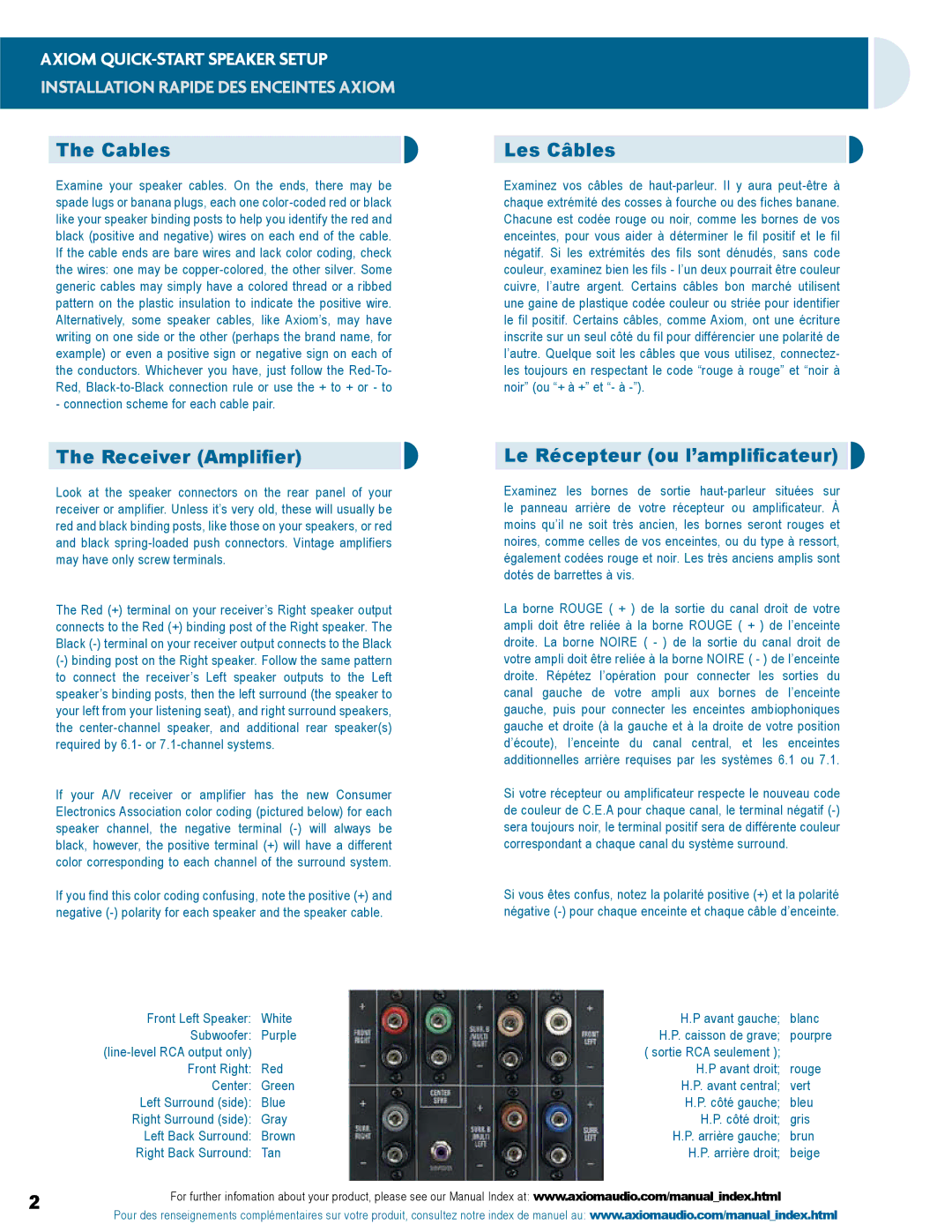VP100V2, VP150V2 specifications
Axiom Audio is a renowned name in the realm of high-fidelity audio, and their VP150V2 and VP100V2 models are prime examples of the quality and innovation they offer. These speaker systems are designed to deliver powerful, immersive sound, making them an excellent choice for home theater enthusiasts and music lovers alike.The Axiom VP150V2 is a center channel speaker that effectively anchors your audio experience. It features a unique design that includes dual 5.25-inch polypropylene woofers, which deliver deep and clear bass. This speaker is known for its ability to produce dialogue with exceptional clarity, making it an ideal choice for movie enthusiasts. The VP150V2 also includes a 1-inch titanium dome tweeter, which ensures that high frequencies are crisp and detailed. With a frequency response ranging from 60 Hz to 22 kHz, users can expect a wide soundstage that brings cinematic experiences to life.
Meanwhile, the Axiom VP100V2 serves as a more compact alternative, maintaining high-quality performance in a smaller footprint. It features a single 5.25-inch woofer and a 1-inch titanium tweeter, delivering impressive audio quality for its size. This speaker is particularly well-suited for smaller home theater setups or as part of a stereo system. With a frequency response from 70 Hz to 22 kHz, the VP100V2 offers a balanced sound profile that emphasizes clarity and precision across all frequencies.
Both models utilize Axiom Audio’s advanced technologies like the proprietary waveguide design, which enhances dispersion and creates a wider listening sweet spot. Additionally, the speakers are built with high-quality materials and construction methods, ensuring longevity and durability under regular use. Their sleek and modern aesthetic allows them to blend seamlessly into various home decors.
When looking at connectivity and configuration, both speakers are designed to be easy to integrate into any audio setup. They can be paired with various amplifiers and receivers, making them versatile options for different audio systems.
In conclusion, the Axiom Audio VP150V2 and VP100V2 offer exceptional performance and value in the world of home audio. Their advanced technology, superb design, and dedication to sound quality make them stand out choices for anyone seeking to elevate their audio experience, whether for movies, music, or gaming.

